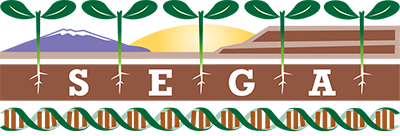You are here
Trees harness the power of microbes to survive climate change
Publication Type:
Journal ArticleSource:
PROCEEDINGS OF THE NATIONAL ACADEMY OF SCIENCES, Volume 114, Issue 42 (2017)URL:
https://www.pnas.org/content/114/42/11009Abstract:
<p id="p-3" class="flushleft">Microorganisms are the most abundant and diverse taxa on Earth. They have the ability to tolerate extreme environments, catalyze a range of metabolic functions, and rapidly evolve in response to changing environmental conditions. Imagine if plants and animals could harness these powers. In fact, microorganisms confer numerous benefits to plants and animals. For example, microorganisms in the mammalian gut improve nutrition, reduce susceptibility to disease, and even alter host behavior (<a id="xref-ref-1-1" class="xref-bibr article-ref-popup hasTooltip" href="https://www.pnas.org/content/114/42/11009#ref-1" data-hasqtip="3">1</a>). Some of the most complex microbiomes are found in soils, where they are responsible for nutrient cycling, crop yield, and carbon sequestration (<a id="xref-ref-2-1" class="xref-bibr" href="https://www.pnas.org/content/114/42/11009#ref-2">2</a>). In some cases, soil microbes can even rescue plants from the negative consequences of climate change (<a id="xref-ref-3-1" class="xref-bibr" href="https://www.pnas.org/content/114/42/11009#ref-3">3</a>). If plants and animals can build associations with specific microbial members that maximize benefits, then harnessing microbial powers may provide rapid and efficient solutions to the challenges resulting from global change.</p><p id="p-4">In PNAS, Gehring et al. (<a id="xref-ref-4-1" class="xref-bibr" href="https://www.pnas.org/content/114/42/11009#ref-4">4</a>) show that the relationship between soil microbial communities and plants is not a fortunate coincidence. Instead, some pinyon pine genotypes form associations with different belowground ectomycorrhizal fungal (EMF) communities that help them contend with drought. These EMF communities were responsible for the observed difference in drought tolerance between host tree genotypes. Because these microbial communities are, at least partially, under plant genetic control, EMF community composition is an extended phenotype of the host tree and potentially a mode of adaptation to the increased drought stress pinyon pines face in a changing climate. Given the vast array of biogeochemical and metabolic functions in the microbial arsenal, if similarly tight linkages occur between diverse soil bacterial and fungal communities and host plant genotypes, then host plants may possess a powerful tactic for adapting to environmental change.</p>
- Log in to post comments
- Google Scholar
- DOI
- RTF
- EndNote XML
- RIS
Theme by Danetsoft and Danang Probo Sayekti inspired by Maksimer
